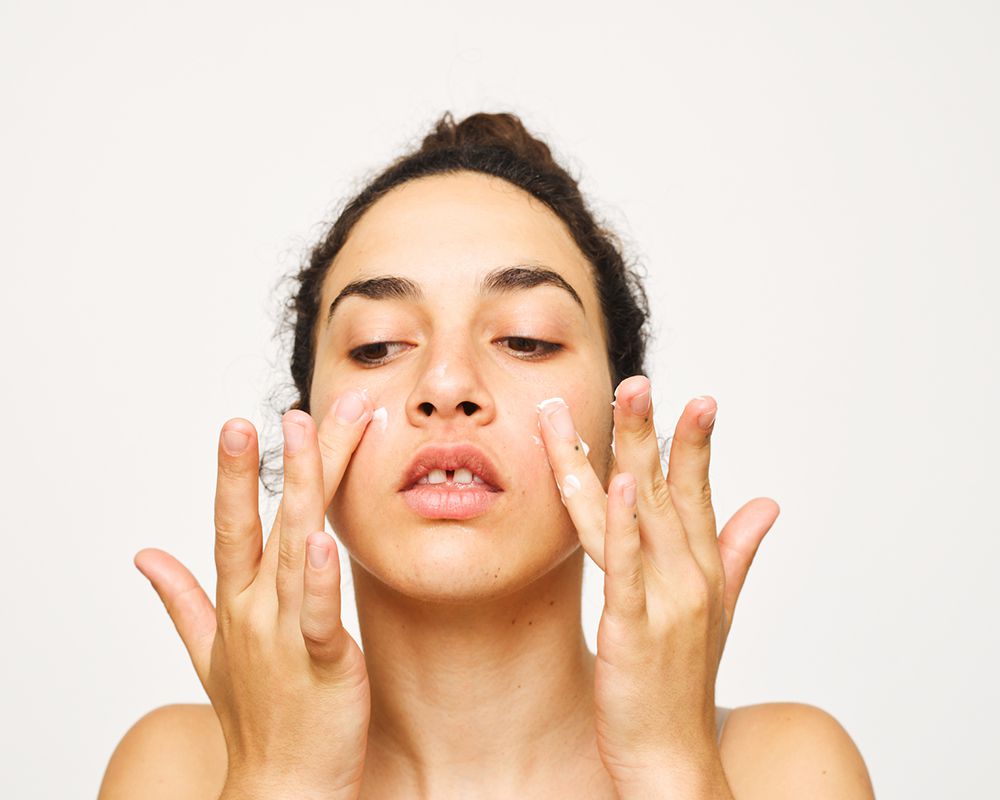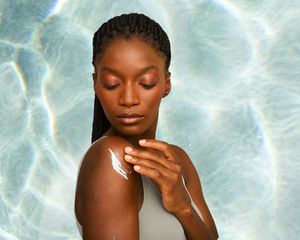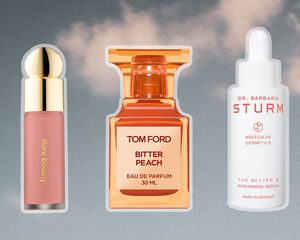
ohlamour studio / Stocksy
We’ve all been there: Your face is washed and layered with skincare, but something goes wrong just as you sweep on a dollop of sunscreen. Instead of lusciously gliding over your skin, the product suddenly becomes all grainy, forming little blobs or “pills,” in industry speak, forcing you to repeat your entire routine.
Not only is sunscreen pilling a pain, it’s also a waste of product, so what can you do about it? We talked to two experts, dermatologist Dr. Dendy Engelman and master aesthetician Anna De La Cruz, to get both the clinical and practical causes of sunscreen pilling and offer up several solutions to get your skin and sun care routines back on track.
Meet the Expert
- Dr. Dendy Engelman, MD, FACMS, FAAD is a board-certified cosmetic dermatologist and Mohs surgeon at the Shafer Clinic in New York City
- Anna De La Cruz is the VP of Product Development at Glo Skin Beauty, product formulator and master aesthetician
Why Does Sunscreen Pill?
One question anyone who experiences sunscreen pilling for the first time is forced to ask is: Is it me or the product? According to our experts, it could be both, amounting to two main causes: the products you use and the way you apply them. Luckily, our experts were chock full of ways to stop sunscreen from pilling and get on with your routine.
Exfoliate Regularly
Every good skincare routine starts with a clean slate. Exfoliation removes dead skin cells and debris, ensuring maximum absorption of skincare products, thus minimizing the risk of sunscreen pilling. However, Engelman explained that finding a balance for your skin is key. “Exfoliating too much or too little can cause our skin to become too dry and/or overly oily, which also contributes to pilling,” she said. “I suggest only exfoliating one to two times per week and using chemical exfoliants rather than physical exfoliants.”
Evaluate the Products You Use
This is an entire article in itself, but in today’s “more is more” beauty culture, people are finding themselves using entirely too many products. Not only can this lead to certain products working against each other, but it can also damage your skin. “Using too many products can throw off the skin’s microbiome, causing irritation, dryness and/or excess oil production, which has a direct relationship to pilling,” Engelman explained. Applying too much product at one time, especially heavy creams and oil-based products, might also block absorption and cause your SPF to pill.
De La Cruz recommends taking a good, hard look at the products that comprise your routine, asking yourself if you really see any benefit from using them, and streamlining. She says you can personalize your regimen by alternating products on different days as well as designating which ones to use between AM versus PM, so you can spread out some of the product love and at the same time reduce the potential of overlaying or using too many products—which can lead to sunscreen pilling.
Apply Products in the Right Order
The order in which you layer your skincare products plays a huge role in how they react with each other. Engelman explained that lighter, thinner products such as serums contain active ingredients with smaller molecular structures, while thicker products, like creams, utilize larger molecules. When applied incorrectly, the larger molecules prevent the smaller molecules from absorbing into the skin properly, thus rendering your products futile and forming the gunky layer that could lead to sunscreen pilling.
“I recommend starting with the lightest and thinnest skincare products first (like serums) then gradually moving on to thicker or heavier products (like moisturizer), and applying your SPF as the last step in your skincare routine,” Engelman said. De La Cruz agreed. “First, think liquid and water weight formulas, like a mist/toner or a lightweight serum like a vitamin C serum, and finish with gels and creams, like a hydrator or moisturizer. The last skincare step should be sunscreen before applying makeup.”
Let Products Dry Before Layering
The time it takes a product to dry or absorb depends on the product’s consistency and your skin type. Both Engelman and De La Cruz suggest waiting a minimum of 30-60 seconds after applying a product, letting any visible dewiness subside before moving onto the next step. Engelman also said another good way to test if you’re ready for the next skincare step is to touch your face. “If you still feel wetness or product on your fingers, the product has not fully absorbed.”
Pay Attention to Ingredients
There are several known ingredients that can react with other products to form pills, including:
- Silicones: Engelman explained that silicones such as dimethicone, amodimethicone, and cyclomethicone, are commonly included in SPFs to increase the efficacy of the sunscreen by creating a barrier on the skin’s top layer to protect against environmental stressors such as wind and water. However, this also means they can clump together and form pilling.
- Xanthan Gum: De La Cruz also mentioned xanthan gum as another potential pilling culprit. This multi-tasker ingredient is used in countless products as a thickener, stabilizer and binder to enhance its texture and feel, but in too-high concentrations, can lead to pilling.
- Mineral Blockers: Ironically, De La Cruz said that some cream SPF formulas with a high mineral content can lead to pilling for certain people. “If you think about how a mineral SPF works—it lays on the surface of the skin, as opposed to a synthetic SPF, which is absorbed into the skin— it has the increased potential of pilling, especially if it’s really rubbed onto the skin.” To remedy this, she advises opting for mineral SPFs with “micronized” minerals.
If your SPF contains any of the aforementioned ingredients and you’re too hooked to give it up, try patting the product into your skin, rather than rubbing it, to decrease the likelihood of the sunscreen pilling.
Try New Products
At the end of the day, not all ingredients are made for all people, and if the presence of a certain ingredient just doesn’t vibe with the other products in your skincare routine, it may be better to nix the one causing the problem and find another SPF. Fortunately, our experts provided a slew of sunscreen options with little chance of pilling.
Engelman said this brush-on SPF is especially great for oily skin, as it’s super lightweight and the dry formula helps to reduce oiliness, which could contribute to pilling.
“Those who are acne-prone should opt for a physical sunscreen that sits on top of the skin and reflects UV light instead of absorbing UV radiation like chemical sunscreens,” Engelman said. This Bliss formula is non-comedogenic and helps regulate oil production with rosa canina fruit oil.
Engelman recommends cream and lotion sunscreens for dry skin, and to look for formulas that also contain hydrating ingredients to nourish skin all day. She said this SPF 50 from Elizabeth Arden will also help to strengthen the skin barrier, making it more resilient.
“Sensitive skin types should use sunscreens that are fragrance-free,” Engelman said, and recommend this iconic formula that’s held holy grail status time and time again.
Perfect for those who find themselves using too many products, this three-in-one formula from Glo Skin Beauty is the ultimate multi-tasker. The tinted moisturizer provides broad-spectrum SPF 30 protection, blue light protection, and vitamin C-driven antioxidant protection with a gorgeous glowy finish.
The Takeaway
Use your battle with sunscreen pilling to learn more about your skin, from what it needs to be healthy to forming an effective, streamlined routine to care for it. Be mindful of the ingredients you are putting onto your skin, and keep trying different products until you’ve found the right match. De La Cruz summed it up perfectly, saying, “Don’t try to make your skin fit the sunscreen, but instead find the sunscreen that fits you!”

















